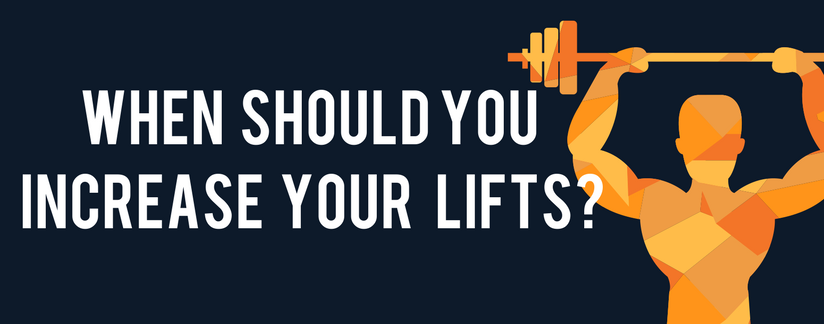GET IN TOUCH TODAY!
"*" indicates required fields

Knowing when you should add more Kilo’s to your lifts can be a tricky decision. Your keen to continue increasing your lifts but don’t want to go up one week to find you immediately go back down the following week.
When you first start lifting you can probably expect a small increase each training session (those were the days!). However, rapid progress such as this is does not last forever, as you become stronger and more experienced your progressions will slow down to weekly, monthly, to perhaps even annually for those that are close to their peaks.
I use to go buy a simple rule whereby every exercise I would train to failure and if I completed all the planned REPs and SETs of an exercise then it was time to add more weight. The problem with this method is you have good days and bad days. On a good day I would nail every REP and SET so make a note in my training log to go up in weight on my next session. However, often when I did this I found that the exercise was then too heavy, my reps would drop significantly, and I would be so fatigued from that one exercise that I would under perform on all my other lifts too. For years it felt like one step forward one step back, I would find myself so determined to increase my lifts that I would eventually overtrain and end up taking two to three steps back. I started to research this and read several books and articles by reputable bloggers who all suggest an easier more productive approach to training.
When we push ourselves to our limits we produce several fatiguing waste products which require rest and recovery before we can continue without them limiting performance. Going to failure on each exercise of your training programme means you will lifting slightly less on each exercise thereafter due to the accumulation of waste products in the muscles, not to mention the fatigue on your nervous system too. I once read an article by Jordan Syatt who is a 5x World Record Powerlifter, and has a Bachelors of Science in Health & Behavior Science with a focus in Strength & Conditioning, in the article he said he never missed a rep in training. Which basically means everything he planned to lift he lifted. No repping out until you can’t lift anymore and your training partner has to lift the weight from you.
Bare with me, I am getting there I promise! I have a very large book at home which I have read a few times called the ‘The Essentials of Strength Training and Conditioning (Baechle, T. and Earle, R)’. In the book it states quite clearly when you should add more Kilo’s to your lifts but I had always ignored it until recent years.
The 2-for-2 rule is a very simple method to determine when it is time to increase your training load on every lift. Quite simply the rule states that if you can perform two or more repetitions above your planned repetition goal in the last set of that exercise in two consecutive workouts, it’s time to increase the load on that exercise for the next training session. The beauty of this system is that it takes into consideration the good days and the bad days as you don’t increase the weight until you have reps left in the tank for two consecutive workouts. You don’t increase weight after just one good workout but two consecutive.
Since finally listening to the actual experts and not the bro science of drugged up gym junkies I started to make progress again. My lifts increased and I began to enjoy training so much more. It is important to push ourselves in training, without a challenge there is no change but training smart is equally as important.